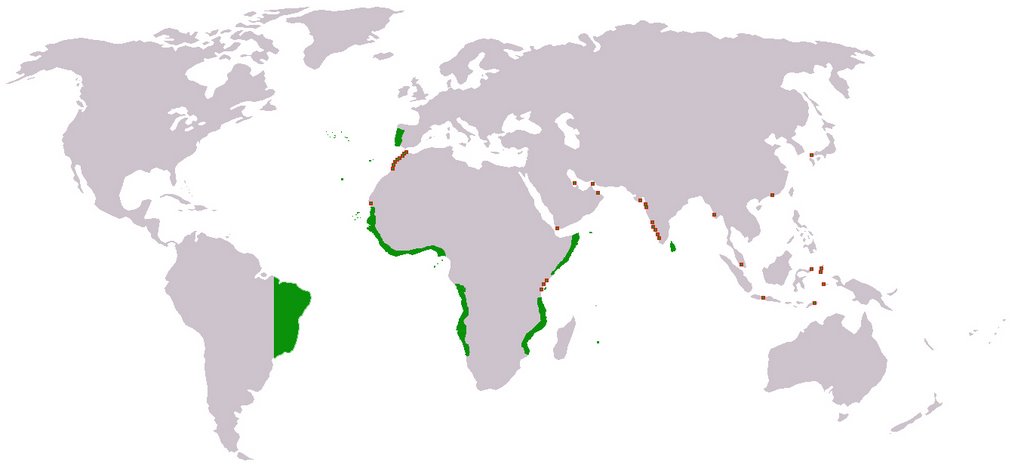 Collision between a comet and a 370 kilogram projectile exposes subsurface ice, causing large amounts of dust and over 250,000 tons of water vapor to stream off the comet. As a liquid that much water would fill over a hundred Olymic-sized swimming pools.
Collision between a comet and a 370 kilogram projectile exposes subsurface ice, causing large amounts of dust and over 250,000 tons of water vapor to stream off the comet. As a liquid that much water would fill over a hundred Olymic-sized swimming pools. NASA for now is sticking to Werner von Braun's World War Two vintage idea of lunar and Martian bases that import everything from earth -- including even such basics as propellants, tankage, food, air, and water. While these white elephants are still seen by most of NASA as the "next logical steps", there are a wide variety of other and often much better ideas for space development out there. I've long considered the possibility that comet mining, or similar drilling for any ice that might exist underneath the regolith of some asteroids (as we know it does on Mars), is a much more productive way to go.
The argument for microgravity ice mining, laid out in the above-linked article, involves several steps of reasoning, but the most important parts of the idea are (1) that use of native materials, rather than hauling materials from earth, is crucial to productive and affordable long-term space development, and (2) that given the expensive bottleneck of launching from earth, the most important variable for space industry is the mass throughput ratio (MTR): the ratio of the mass of material processed per unit of time to mass of the (earth-origin) machinery required. Higher MTR translates to greater amplification of a small mass launched from earth into a large amount of materials processed in space. Cometary or similar ice can be processed to create propellant, tankage, and other useful items as described in the above-linked article.
To develop space economically, instead of merely wasting large amounts of money on historical dead ends, we need to use native materials, and we need to process them with very high mass throughput ratios. Developing bases on the moon, Mars, or elsewhere in deep space without using native materials would be as foolish as if the Pilgrims at Plymouth Rock had imported all their water, food, and wood from England.
I endorse the ice mining approach because, even though cometary (and possibly asteroidal) ice is not conveniently located, we can generally process water with very high mass throughput ratios. Here are some approximate (back-of-envelope) estimates I've made, usually based on the linked descriptions of the process. I typically assume the machines can operate on average 20 hours per day, 300 days per year:
Centrifuge that separates sludge from water at a rate of 200 gallons per minute.
Snow cone machine (grinding ice into small bits): 67,000/yr. (In other words, the machine can convert 67,000 times its own weight in ice to "snow" in a year).
Sludge separation with centrifuge: 3,000/yr.
Snow making from liquid water: 330,000/yr.
The MTR of a sequence of processes can be readily estimated. For example to grind ice into snow, then melt it (which I assume here has an MTR of 10,000/yr.), then separate out the dirt and organics with a centrifuge, then make snow with the now clear water -- a sequence similar to the comet mining process described in the above-linked article -- I estimate the MTR to be about 1,500 per year with the current off-the-shelf equipment.
If this can be achieved for comet mining, then we can (for example) launch 10 tons of equipment and, by staying at the comet or asteroid for two years, make 30,000 tons of ice for various uses, including propellant, tankage, and radiation shielding. This is before discounting mass we lose from transporting the equipment to the comet or asteroid and ice back to a useful orbit, which will often be a factor of 10 to 20 -- see the above-linked article. Thus 10 tons launched into low earth orbit would result in 1,500 to 3,000 tons of water ice in a useful orbit such as earth geosynchronous orbit, Earth-Sun L1 (for the global warming application, link below), Mars orbit, or a wide variety of other inner solar system orbits.
Old ice breaker.
With a decent R&D budget we can probably actually do much better than the current off-the-shelf equipment, some aspects of which have to be redesigned for the space environment anyway (e.g. where the water flow depends on gravity). The MTRs of many of these machines can probably be improved by large factors by appropriate substitution of materials with better engineering properties (especially strength) per mass -- for example Kevlar, Vectran, Spectra, carbon fiber, or carbon nanotube for structural steel and diamond grit for grinding surfaces. Such substitutions would be too expensive for typical earthside applications, but make sense where transportation costs are very high, as with launch costs. This substitution is helped by fact that, unlike most other proposed processes for extracting propellant from materials native to space (e.g. liquid oxygen from lunar soil) these processes don't require high temperatures.
Old ice saw.
On a related note, here's an interesting set of pages on the ancient art of harvesting, handling and storing ice for refrigeration.
Lest this all be dismissed as mere NASA-style entertainment, there are possibly quite important applications, including combatting global warming, for which native material based space industry is crucial. (No, the idea is not to throw big ice cubes into the earth's oceans. :-) Furthermore, once the first mission returns ice, it can be used as propellant and tankage to bootstrap even more ice mining equipment. Only a few such boostrapping cycles are needed before orbital ice becomes as cheap as water on earth. Since comet ice can include methane and ammonia as well as water, it can provide the raw materials for most of chemicals and bulk materials we need in space industry. Indeed, all the above-mentioned advanced materials can be manufactured starting with these building blocks -- keeping in mind that the current earthside manufacturing processes will have to themselves be examined for MTR, reliability, and automability, and so the substitution of more simply produced materials may be in order, just as we are substituting a simpler rocket for advanced earth-launched upper stages in order to take advantage of native ice derived propellant and tanks.
Of course, there many challenges with automation and reliability to be met. Some of these are being addressed by the current developments in deep sea oil and mineral extraction, which I am currently researching and will hopefully cover in a near future post.
 Here is recent evidence of not just ice, but (at least temporarily) liquid water underneath the Martian surface that has flowed out onto the surface and frozen. Mars itself, in a deep gravity well, is not an ideal source of water for use beyond Mars, but ice there suggests that ice might also survive near the surfaces of some asteroids that lie even farther from the sun.
Here is recent evidence of not just ice, but (at least temporarily) liquid water underneath the Martian surface that has flowed out onto the surface and frozen. Mars itself, in a deep gravity well, is not an ideal source of water for use beyond Mars, but ice there suggests that ice might also survive near the surfaces of some asteroids that lie even farther from the sun.











 Some technologies create standards that we all come to follow, as in standard weights and measures. Old unforgeably costly standards, such as those of
Some technologies create standards that we all come to follow, as in standard weights and measures. Old unforgeably costly standards, such as those of 
 To what extent will computer algorithms come to serve as authorities? We've already seen one algorithm that has been in use for centuries: the adding algorithm in adding machines and cash registers. Some other authoritative algorithms have become crucial parts of the following:
To what extent will computer algorithms come to serve as authorities? We've already seen one algorithm that has been in use for centuries: the adding algorithm in adding machines and cash registers. Some other authoritative algorithms have become crucial parts of the following:









 The pigeonhole principle sounds trivial but is profound. It says that you can't fit n pigeons into fewer than n holes without cramming at least two pigeons into one of the holes. It says that somebody must lose in a game of musical chairs. In fancier mathematese, which you can safely skip if it sounds like gibberish, the pigeonhole principle says that there is no bijective (or 1-to-1 and onto) mapping (or function) between a set S and any proper subset of S, or for that matter any set smaller than S. [*]
The pigeonhole principle sounds trivial but is profound. It says that you can't fit n pigeons into fewer than n holes without cramming at least two pigeons into one of the holes. It says that somebody must lose in a game of musical chairs. In fancier mathematese, which you can safely skip if it sounds like gibberish, the pigeonhole principle says that there is no bijective (or 1-to-1 and onto) mapping (or function) between a set S and any proper subset of S, or for that matter any set smaller than S. [*]





